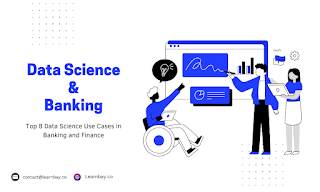Applications of Sentiment Analysis in Data Science
Sentiment analysis: What is it?
Analysis of the customer's positive or negative attitude in the text is known as sentiment analysis. Businesses can monitor online chats to use contextual analysis of identifying information to understand their consumers' social mindset better.
Brand Observation
The thing that a brand does not determine is who it is, depending on how you use internet marketing, social media campaigns, content marketing, and customer support services to establish your brand. One of the most crucial applications of sentiment analysis is getting complete 360-degree views of how your consumers see your organization, product, or brand.
Using sentiment analysis, you may measure how potential consumers perceive you. Analyzing social media and survey data, you may gain important insights into how your company is doing well or poorly for your consumers.
Businesses frequently employ sentiment analysis as a potent tool to assess how their goods and marketing are affecting stakeholders and consumers. You may gain a plethora of knowledge about your brand's position in the market by using brand monitoring. You may use sentiment analysis to automatically categorize all brand mentions based on their urgency and then send them to the relevant team.
By keeping the customer's feedback in mind, you can create more attractive branding approaches and marketing strategies that can aid in smooth transitions.
Customer Service
Customer service firms frequently use sentiment analysis to categorize incoming calls from users into classifications for urgent and non-urgent situations. Based on the tone of the emails or proactively recognizing the calls from angry consumers, the categorization is made.
Customers anticipate an immediate, intuitive, and personalized interaction with businesses. Therefore, to answer consumers' problems and uphold the value of their brand, service providers concentrate more on urgent calls. Review customer support conversations to ensure that your staff follows the proper procedure. Additionally, make your services more effective to avoid keeping consumers waiting longer for assistance.
Understanding the customer perspective has become more critical as the customer service industry has increasingly become automated by utilizing machine learning. To better understand the context and intent of the discussions, businesses are using NLP-based chatbots as their first line of customer service.
Financial and Stock Tracking
As the saying goes, "Be greedy when others are scared and fearful when others are greedy." However, this raises the question of how to tell if other people are acting out of fear or greed. You may utilize the sentiment analysis method in this case. Making investments may take time, especially in the corporate sector. The market and stocks are constantly fraught with hazards, but if you perform the proper study before investing, these risks may be reduced.
For instance, if you want to invest in the automotive sector but can't decide between business X and company Y, look at the feedback the firm has gotten for its most recent products. You may use it to locate the product selling better on the market.
A buildup of Business Intelligence
The use of digital marketing is widely used in companies. Social media frequently posts comments and product reviews. Evaluating your client retention rate is much simpler when you have access to sentiment data about your business and new goods.
Using sentiment analysis, you may ascertain how your product is selling and what extra is required to increase sales. You may also examine the replies your rivals' competitors have given. You can better meet the demands of your customers as a result of the survey that was produced. You may immediately decide how you want to respond to the current market conditions.
Being dynamic is key to business intelligence. Sentiment analysis, therefore, provides you with the freedom to manage your firm successfully. For instance, before putting a massive concept into action, you may test and analyze it. For more information on BI tools and technologies, refer to the data science courses in Bangalore, co-developed by IBM.
Improving Customer Experience
A positive customer experience increases the likelihood that they will do business again. A successful organization understands how crucial it is to pay attention to how rather than what they give.
Brand monitoring provides us with accurate, priceless data about consumer sentiment. However, you can also apply a similar analysis to surveys and customer service encounters.
Will you suggest this brand, product, or service to your friends or family?
This is a basic question that NPS (Net Promoter Score) surveys use to get feedback for your company. One score on the number scale is the result. These sentiment ratings are used by businesses to classify customers as promoters, detractors, and passives.
The objectives here are finding the total customer experience and turning your consumer into a promoter. Include the phases "will buy more, stay longer, and refer another client" theoretically.
The NPS survey will next ask respondents to leave their scores and look for open-ended comments or qualitative data. Analysis of qualitative surveys is far more complex. However, these texts may be divided into several groups using sentiment analysis, which provides further insights into the customers' attitudes.
Customers' experiences might be either favorable, bad, or indifferent, as was already established. You may group the data into different categories based on the reviews left by consumers. You can correctly execute product updates, customer support, services, etc., with the aid of this classification.
Additionally, keep in mind that receiving favorable feedback on your product is not always sufficient. No matter how fantastic your offerings are, your company's customer assistance should always be first-rate.
Market analysis and research
Business intelligence uses sentiment analysis to comprehend the arbitrary factors influencing a client's response to a given factor, such as a product, user experience, or customer service.
Thanks to sentiment analysis, you may do many forms of market research and competition analysis. Whether you're looking to break into a new market or get an advantage over the competition, it may significantly impact you.
You may evaluate your product online and see how it stacks up against the competition. You might also examine the drawbacks of your rivals and take advantage of them.
In sociology, psychology, and political science, sentiment analysis examines trends, viewpoints, ideological bias, measure response, etc. There are currently many operational uses for sentiment analysis.
Conclusion
Due to the development of technology, the age of gaining insightful data via surveys and social media has ended. As a result, it is now essential for your company to be aware of how your clients are feeling. In order to maximize the potential of data and gain the most insightful understanding, businesses are utilizing sophisticated classifiers like sentiment analysis and contextual semantic search.
Utilizing technologies for natural language processing, you may create company plans, meet or exceed customer expectations, generate leads, create marketing campaigns, and uncover new growth opportunities. Learnbay offers the most comprehensive data science course in Bangalore, for working professionals of all backgrounds. Here students get a chance to build domain-specific projects and earn IBM Certification for a successful career.




Comments
Post a Comment